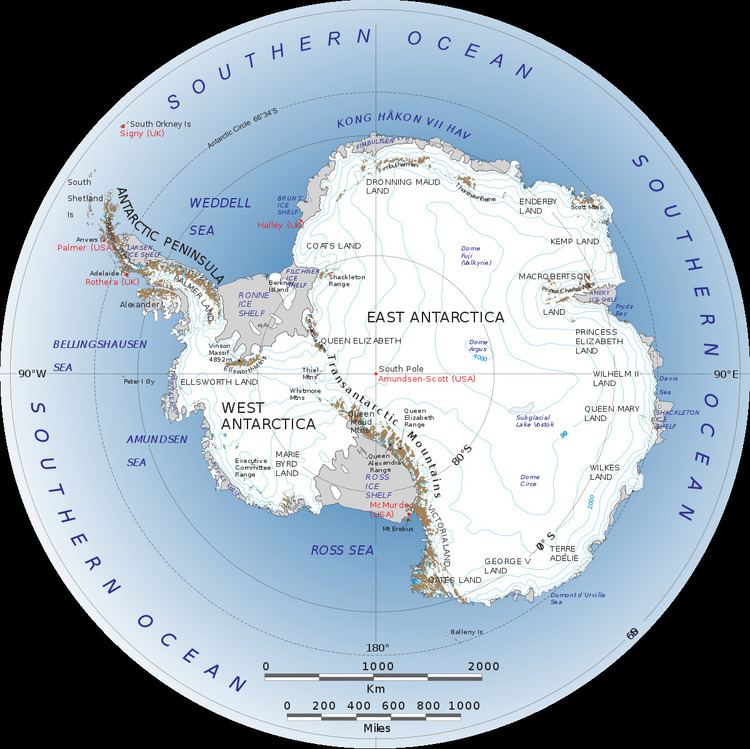Coastline 17,968 km (11,165 mi) | Borders No land boundaries | |
 | ||
Area Ranked 2nd (unofficially) Lowest point Bentley Subglacial Trench, −2,555 m (−8,382.5 ft) | ||
Antarctica is the southernmost continent on Earth. While Antarctica has never had a permanent human population, it has been explored by various groups, and many locations on and around the continent have been described. This page lists notable places in and immediately surrounding the Antarctic continent, including geographic features, bodies of water, and human settlements.
Contents
Bodies of water
Antarctica is a desert, receiving very little annual precipitation. However meltwater from the continent's ice features produce a number of rivers and streams. A list of these can be found at List of rivers of Antarctica
Ice
Nearly all of Antarctica's surface is covered by ice to an average depth of 1.9 km (1.2 mi; 6,200 ft). As such, a number of notable ice features have been described on the continent.
Ice shelves
In many places, continental ice sheets extend from the continent forming massive ice shelves.
A list of Antarctic ice shelves can be found at List of Antarctic ice shelves.
Islands
A number of islands surround Antarctica. For a list of them, see List of Antarctic and subantarctic islands.
Ridges and rock features
Mountains and hills
There are a number of mountain lists for Antarctica:
To be added to lists are:
Volcanoes
Antarctica has a number of active and extinct volcanoes. For a list of them, see List of volcanoes in Antarctica.
Human Settlements
Antarctica has no permanent human population, however there are a variety of man-made places in Antarctica.
